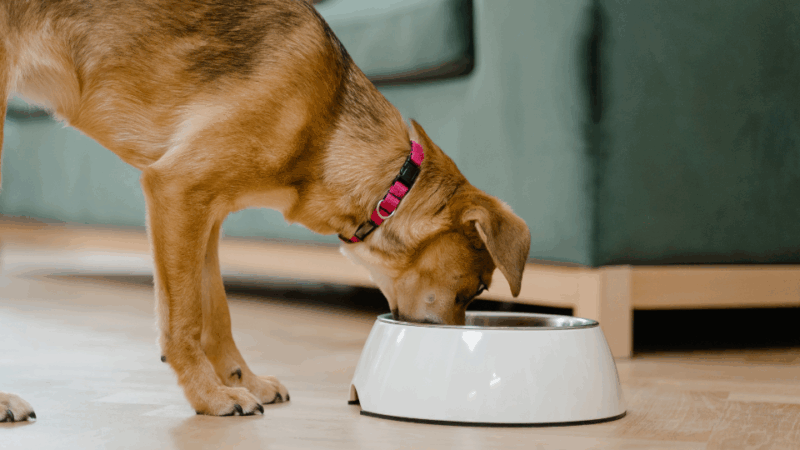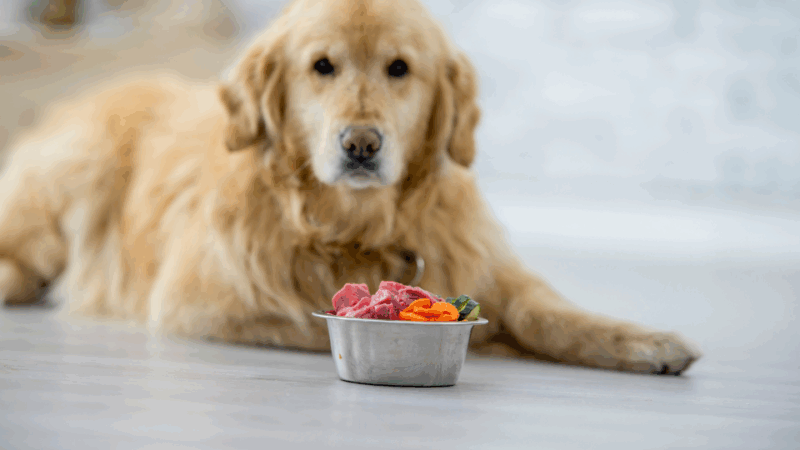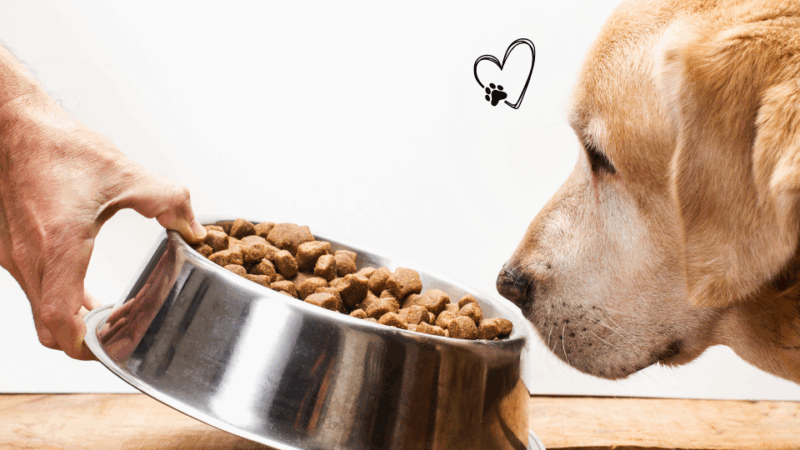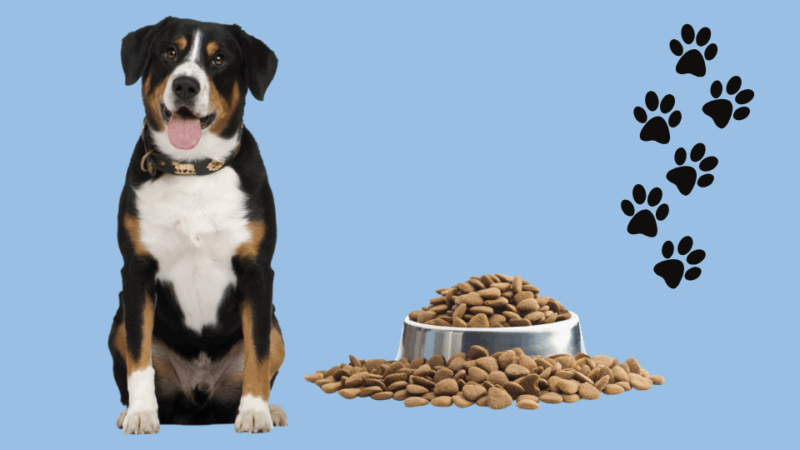Not everyone with a dog is gung-ho about grain-free or gluten-free options, but the wave of interest is definitely out there. Maybe your pup struggles with stomach upset, scratchy skin, or low energy.
A switch to gluten-free formulas could be one piece of the puzzle if other approaches haven’t worked. On the other hand, a good number of dogs eat food with gluten just fine.
There’s no single magic solution for every canine, but information helps pet owners make informed decisions. Let’s move on and explore the nitty-gritty!
Key Highlights
- Gluten is found in wheat, rye, barley. Most dogs aren’t bothered by it, but certain pups do react negatively.
- Gluten-free diets may help with digestion problems and skin issues, especially if a dog has verified wheat sensitivity.
- Myths are everywhere: not every dog is allergic, gluten-free isn’t automatically grain-free, and it doesn’t magically solve everything.
- If a pup needs gluten-free, look for transparent labels, real meat, named carbs, and any beneficial add-ons like probiotics.
- Homemade dog food can be an option, but approach that with caution and professional insight.
Gluten 101 – What It Actually Is and Why Some Pups React
Gluten is essentially a protein composite lurking in wheat, rye, barley, and related grain products. In the realm of baked goods, it lends dough its elasticity and structure.
In dog food, it often shows up as wheat gluten, acting as a plant-based protein booster or binder in kibbles and treats. A lot of canines handle gluten without any drama.
But certain pups—especially Irish Setters dealing with a hereditary condition similar to celiac disease—may have adverse reactions. In such cases, gluten can create stomach discomfort, gas, diarrhea, or immune-related problems.
Some breeds or individual dogs might also show external reactions like irritated skin, ear infections, or overall itchiness. Once a dog is officially identified as gluten sensitive, the right food can make a world of difference.
Perks of Gluten-Free Dog Food

1. Possible Help for Pups with Specific Allergies
A gluten-free diet can offer relief from digestive woes and flare-ups.
For sensitive Irish Setters or pups with a documented intolerance, it’s often a safer bet than rolling the dice with formulas that include gluten, as per Royal Canin Academy.
2. Better Tummy Health
A gluten-free product often includes ingredients like sweet potatoes, peas, or lentils.
According to Dog Food Advisor, such carbohydrate sources tend to be more digestible and gentler on the gut, particularly if you have a dog dealing with irritable bowel symptoms or recurring loose stools.
3. Relief for Itchy Skin
Chronic scratching, redness, or repeated ear infections can drive owners up the wall.
When the culprit is a wheat-induced sensitivity, removing gluten from a pup’s menu could calm inflammation and dial down allergic reactions. Coat quality might even improve over time.
4. A “Cleaner” Ingredient Lineup
Some gluten-free dog food brands really focus on top-notch ingredients. Check the label, and you may see honest sources of protein, a lack of artificial additives, and more transparency about the formula.
That emphasis on quality resonates with a lot of dog parents who worry about subpar fillers or shady by-products.
Frequent Misconceptions
It’s easy to bump into misinformation when researching dog diets. Here’s a quick rundown of a few popular myths:
Myth 1: “All Dogs Are Gluten Intolerant”
Nope. Many dogs digest gluten without any hiccups. Actual intolerance is relatively rare in canines.
Most allergies in dogs trace back to common animal proteins, such as chicken or beef, rather than wheat-based elements.
Myth 2: “Grain-Free and Gluten-Free Mean the Same Thing”
Not exactly. Grain-free dog foods skip every type of grain (such as corn, oats, rice), while gluten-free focuses on avoiding wheat, barley, or rye.
Rice and corn don’t have gluten, so a gluten-free recipe could still feature grains.
Myth 3: “Gluten-Free Automatically Equals Healthier”
It’s not a magic label. Some gluten-free brands cram starch-heavy fillers into their formulas, which might not deliver the balanced nutrition a dog needs.
The key is checking overall ingredients, nutrient profiles, and brand reputation.
Myth 4: “Gluten Triggers DCM (Heart Disease)”
The FDA has looked into a correlation between certain grain-free diets and canine heart disease (DCM).
Gluten itself, however, hasn’t been pinned down as a direct suspect. Nutritional deficiencies involving taurine or a high reliance on legumes might be the real culprits in some cases.
Signs a Pup May Need Gluten-Free

- Chronic diarrhea or bloating
- Ongoing skin problems, including hot spots or hair loss
- Persistent ear issues
- Documented food allergies
- Breed-based tendencies (looking at you, Irish Setters)
If your dog matches some of those patterns, a vet appointment is a fantastic next step.
Doctors often recommend an elimination diet, which is basically a systematic way of figuring out the triggers.
Changing a pet’s diet without guidance can be hit-or-miss, so it’s best to get professional input.
Top Gluten-Free Brands in 2025
Plenty of choices crowd the pet food market. Instead of drowning in ingredient lists and marketing slogans, peek at a handful of noteworthy options that stand out for consistent quality:
| Brand | Protein Source | Key Features | Ideal For |
| Wellness CORE Grain-Free Original | Deboned turkey, chicken meal | No soy, wheat, corn; probiotics & omega fatty acids | Active adult dogs, sensitive stomachs |
| Blue Buffalo Basics LID | Turkey or salmon | Limited ingredients, uses rice or potato as carb base | Allergic pups needing minimal ingredients |
| Canidae PURE LID Grain-Free | Lamb, chicken, or salmon | Typically 7–10 ingredients max, added probiotics | Dogs requiring a simpler recipe |
| The Honest Kitchen | Human-grade chicken, beef, or fish | Dehydrated, gluten-free, whole food ingredients | Owners focused on human-grade diets |
| Natural Balance L.I.D. | Duck, bison, or fish | Gluten-free and grain-free choices, balanced formulas | Pets with chronic skin or digestion issues |
What Makes a Good Gluten-Free Dog Food?

Keep an eye out for certain criteria if you’re planning a switch:
- Real Animal Protein First: Deboned chicken, turkey, salmon, or lamb at the top of the ingredients
- Named Carbohydrates: Sweet potato, rice, quinoa, or other clearly identified sources
- Fatty Acids for Skin/Coat: Omega-3 and omega-6, typically from fish oil or flaxseed
- Probiotics & Prebiotics: Aiding digestion by promoting healthy gut flora
- AAFCO Compliance: Confirming the product meets nutrient levels for the correct life stage (puppy, adult, senior)
Homemade Gluten-Free Dog Food
A homemade approach can give you total control of a dog’s menu. Gluten-free cooking at home usually starts by leaving out wheat, rye, and barley.
- Proteins: Chicken, turkey, lamb, fish
- Carbs: Sweet potatoes, pumpkin, quinoa, brown rice
- Veggies: Carrots, spinach, green beans
- Healthy Fats: Fish oil, flaxseed, olive oil
One big warning: going the DIY route can be complicated. Getting the right balance of calcium, phosphorus, vitamins, and minerals is tricky unless you have a veterinary nutritionist on speed dial.
Homemade diets done poorly might leave out crucial nutrients, so don’t hesitate to consult a pro. You want all the dog’s nutritional bases covered.
Is Gluten-Free Right for Every Dog?
@wag Is gluten in your dog’s food a concern? Learn about the potential benefits and drawbacks of a gluten-free diet for your furry friend 🐾🌾 #petnutrition #glutenindogfood #dogdiet
No major issues with digestion or coat health? No breed-specific predisposition toward gluten sensitivity? Then there might be little reason to switch.
Some folks prefer focusing on overall ingredient quality rather than cutting out gluten specifically. On the flip side, if a pooch is plagued by constant diarrhea, recurring ear infections, or a persistent rash that medication can’t quite fix, a gluten-free formula could be the missing piece.
It’s often a worthwhile experiment under veterinary guidance. Keep in mind that “less is more” can be a great rule of thumb, especially for sensitive pets.
Limited-ingredient diets or formulas pinpointing potential triggers might be the ticket to fewer vet visits and a happier dog. But no single “cure-all” approach fits every canine in existence, so don’t be pressured by marketing tactics alone.
Summary
Gluten-free can be life-changing for the right dog, but plenty of canines do perfectly fine with a regular diet. The key is finding food that checks all the nutritional boxes and keeps a dog feeling lively, itch-free, and balanced.
Try not to get lost in hype—watch the pup’s actual response, consult a vet when in doubt, and pick a product that stands up to scrutiny. A happy, healthy dog is what it’s all about, gluten or no gluten.







